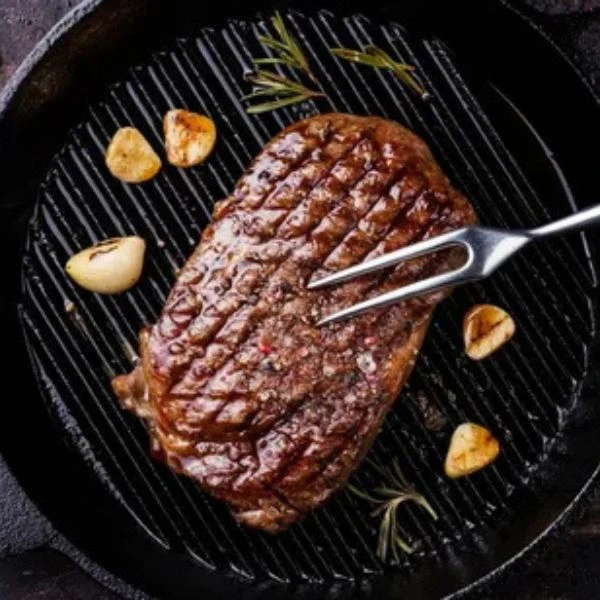Top 5 Mistakes to Avoid When Cooking Meat
Cooking Mistakes
Cooking meat is a skill that can be easily mastered with a little knowledge and practice, but even the most experienced home cooks can make mistakes that affect the flavor, texture, and overall quality of their dishes. Whether you’re grilling steaks, roasting a chicken, or pan-searing pork chops, a few common errors can result in dry, tough, or undercooked meat.

To help you elevate your cooking game, we’ve put together a list of the top 5 mistakes to avoid when cooking meat—and tips on how to avoid them. By making a few simple adjustments, you can turn every meat dish into a mouthwatering masterpiece.
1. Overcooking or Undercooking the Meat
One of the most common mistakes when cooking meat is not properly managing the cooking time or temperature. Overcooked meat becomes dry, tough, and flavorless, while undercooked meat can lead to safety concerns and an unpleasant texture.
How to Avoid It:
- Use a meat thermometer to ensure that your meat reaches the appropriate internal temperature. For example, beef steaks should be cooked to 130°F for medium-rare, while chicken needs to reach 165°F to be safe.
- Follow recommended cooking times for different cuts of meat, but also keep an eye on how the meat looks and feels. Cooking times can vary based on thickness, heat source, and even the cut of meat.
- Rest your meat after cooking. This allows juices to redistribute, which helps keep the meat moist and tender.
Pro Tip: Invest in a digital instant-read thermometer for accurate, quick temperature checks.
2. Using the Wrong Cut for the Recipe
Different cuts of meat have different textures, flavors, and cooking requirements. Using the wrong cut for the recipe can result in a tough, chewy, or bland dish. For example, cooking a delicate fillet mignon the same way you would cook a tougher cut like brisket will lead to disappointing results.
How to Avoid It:
- Know your cuts of meat and how they should be cooked. Tender cuts like ribeye and filet mignon are great for quick cooking methods like grilling or pan-searing, while tougher cuts like chuck or brisket benefit from slow cooking or braising.
- For tougher cuts, consider marinating the meat beforehand to break down connective tissues and improve flavor. For more tender cuts, less is often more—avoid over-marinating, as it can overwhelm the natural flavor of the meat.
Pro Tip: Slow-cook or braise tougher cuts like pork shoulder or lamb shank for melt-in-your-mouth tenderness.
3. Not Letting the Meat Rest After Cooking
After you’ve cooked a beautiful piece of meat, it’s tempting to cut into it right away and enjoy the fruits of your labor. However, cutting into meat too soon can cause all those precious juices to escape, leading to a dry and less flavorful dish.
How to Avoid It:
- Let your meat rest for at least 5-10 minutes after cooking. This allows the juices to redistribute throughout the meat, making it more moist and flavorful.
- The larger the cut of meat, the longer the resting period should be. For example, let a roast rest for about 10-20 minutes, while smaller cuts like steaks or chops just need a few minutes.
Pro Tip: Tent your meat loosely with foil while it rests to keep it warm without trapping too much steam.
4. Overcrowding the Pan or Grill
Whether you’re pan-searing steak or grilling chicken, overcrowding the cooking surface is a sure way to ruin your meal. When you overcrowd the pan or grill, the meat ends up steaming in its own juices instead of searing properly, resulting in a less flavorful and less crispy exterior.
How to Avoid It:
- Cook in batches if necessary. If you have a lot of meat, cook it in smaller portions to give each piece enough room to sear.
- Preheat your pan or grill to the right temperature before adding the meat. For grilling, make sure the grill is hot enough to create a nice sear. For pan-searing, a hot skillet ensures a good crust while keeping the inside tender.
Pro Tip: For a perfect sear, use a cast iron skillet or a high-quality non-stick pan. These materials hold heat better and promote an even, golden-brown crust.
5. Not Seasoning Enough
One of the easiest ways to elevate the flavor of meat is to season it properly. Too many cooks either forget to season the meat or don’t use enough seasoning, resulting in a bland dish.
How to Avoid It:
- Season liberally with salt and pepper before cooking. Salt enhances the natural flavors of the meat and helps draw out moisture for a better crust. Don’t be afraid to add other spices, herbs, and aromatics depending on the cut and cooking method.
- For more complex flavors, marinate or dry rub the meat a few hours or even overnight before cooking. The longer the meat sits with the seasoning, the deeper the flavor.
- Remember that seasoning is not just for the meat itself—seasoning your cooking oil, butter, or sauce can also bring out additional flavor.
Pro Tip: Kosher salt is a great option for seasoning meat because its coarse texture is easier to control and enhances the natural flavor of the meat.
Conclusion
Cooking meat can seem intimidating, but with a little practice and attention to detail, you can create delicious, perfectly cooked dishes every time. Avoiding these common mistakes—overcooking, using the wrong cuts, skipping the rest period, overcrowding the pan, and under-seasoning—will make a huge difference in the quality of your meals.
So next time you fire up the grill or heat the skillet, keep these tips in mind, and you’ll be rewarded with juicy, flavorful meat that’s sure to impress.


